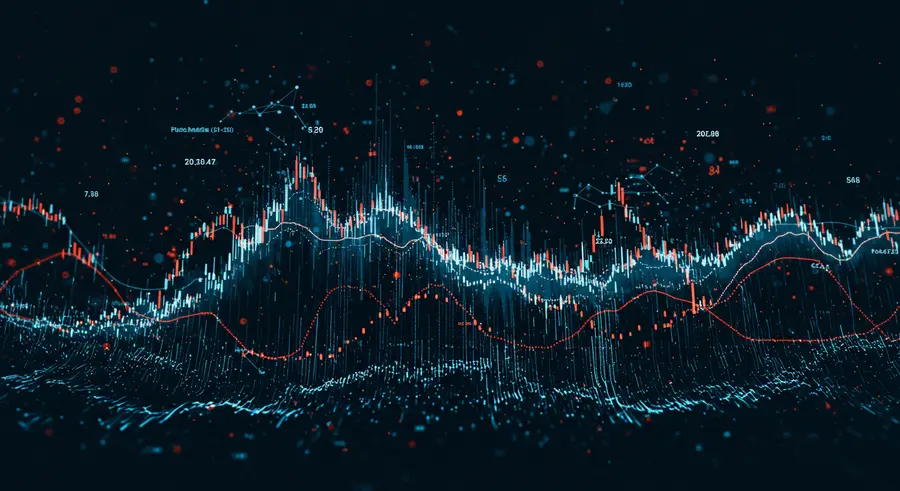Leveraging AI for Advanced Time-Series Analysis
In today's data-rich environment, time-series databases (TSDBs) are becoming indispensable for handling the continuous streams of data generated by everything from IoT devices to financial markets. However, merely storing this data isn't enough. To extract meaningful insights, especially for predictive analysis, anomaly detection, and sophisticated forecasting, Artificial Intelligence (AI) and Machine Learning (ML) techniques are proving to be game-changers.

The Synergy Between AI/ML and TSDBs
Time-series data, by its very nature, is ordered and often exhibits trends, seasonality, and cycles. These characteristics make it particularly amenable to AI/ML algorithms designed to recognize patterns and make predictions based on historical sequences. TSDBs provide the robust, high-performance infrastructure needed to ingest, store, and quickly retrieve vast quantities of this data, forming the bedrock upon which powerful AI models can be built.
The marriage of TSDBs and AI/ML allows for:
- Enhanced Predictive Modeling: From predicting stock prices and energy consumption to forecasting server loads, AI models like Recurrent Neural Networks (RNNs) and Long Short-Term Memory (LSTM) networks excel at learning complex temporal dependencies in time-series data.
- Automated Anomaly Detection: Identifying unusual patterns that deviate from the norm is critical in many applications, such as cybersecurity (detecting intrusions), industrial IoT (predicting equipment failure), and fraud detection. ML algorithms can be trained to automatically flag these anomalies in real-time data streams.
- Intelligent Forecasting: Beyond simple predictions, AI can provide more nuanced forecasts, considering multiple variables and non-linear relationships, aiding strategic decision-making in business, finance, and operations.
- Sentiment Analysis from Time-Ordered Data: A fascinating application of AI in time-series analysis is understanding evolving sentiment. By processing large volumes of time-stamped text data from social media, news feeds, or financial reports, AI models can extract sentiment trends. This insight is incredibly valuable for market analysis, helping investors understand public perception and anticipate market movements. For those interested in leveraging such insights for financial research, platforms like Pomegra.io offer advanced tools that integrate AI-powered sentiment analysis into their market intelligence suite.
Key AI/ML Techniques for Time-Series
A range of AI/ML techniques can be applied to time-series data:
- Traditional Statistical Models: ARIMA, Exponential Smoothing, and Holt-Winters are classic methods for forecasting that provide a strong baseline.
- Machine Learning Algorithms: Gradient Boosting Machines (e.g., XGBoost, LightGBM) and Random Forests can capture complex, non-linear relationships. Support Vector Machines (SVMs) are also used for classification and regression tasks.
- Deep Learning Models:
- Recurrent Neural Networks (RNNs): Specifically designed for sequential data, making them ideal for time-series.
- Long Short-Term Memory (LSTM) Networks: A type of RNN particularly effective at learning long-term dependencies, overcoming vanishing gradient problems.
- Convolutional Neural Networks (CNNs): While traditionally used for image processing, 1D CNNs can be adapted for time-series to detect local patterns.
- Transformers: Increasingly popular for their ability to process long sequences and capture global dependencies through attention mechanisms.
Challenges and Considerations
While the potential is immense, integrating AI/ML with TSDBs comes with its own set of challenges:
- Data Preprocessing: Time-series data often requires extensive cleaning, normalization, and feature engineering before it's ready for AI models.
- Computational Resources: Training complex deep learning models on vast time-series datasets can be computationally intensive, requiring significant hardware and cloud resources.
- Model Interpretability: Black-box AI models can be difficult to interpret, making it challenging to understand why a particular prediction or anomaly was flagged.
- Real-time Inference: For applications requiring immediate responses (e.g., fraud detection), performing real-time inference with AI models on streaming time-series data is crucial.
The Future is Intelligent Time-Series
As the volume and complexity of time-series data continue to grow, the role of AI and ML will only become more central. We can expect further advancements in automated feature engineering, more efficient deep learning architectures, and the development of AI-driven TSDBs that can inherently optimize data storage and retrieval based on AI model requirements. The ability to automatically derive actionable insights from historical and real-time time-series data will be a key differentiator for businesses and researchers across all sectors.
Stay tuned for more insights into the fascinating world of time-series databases and their cutting-edge applications!